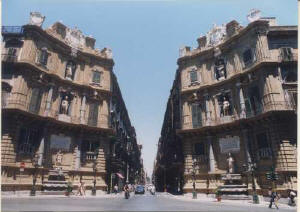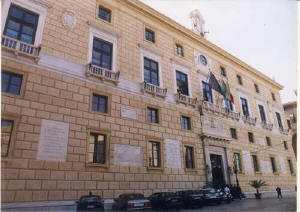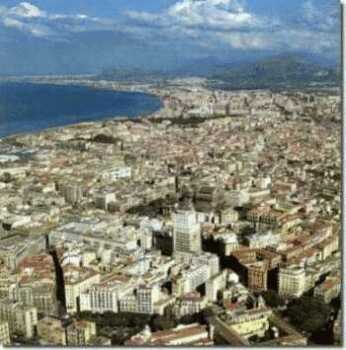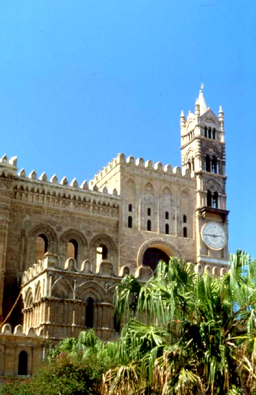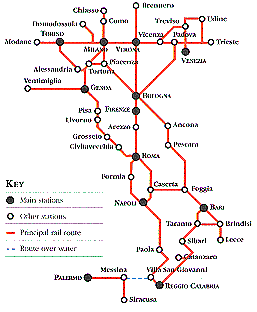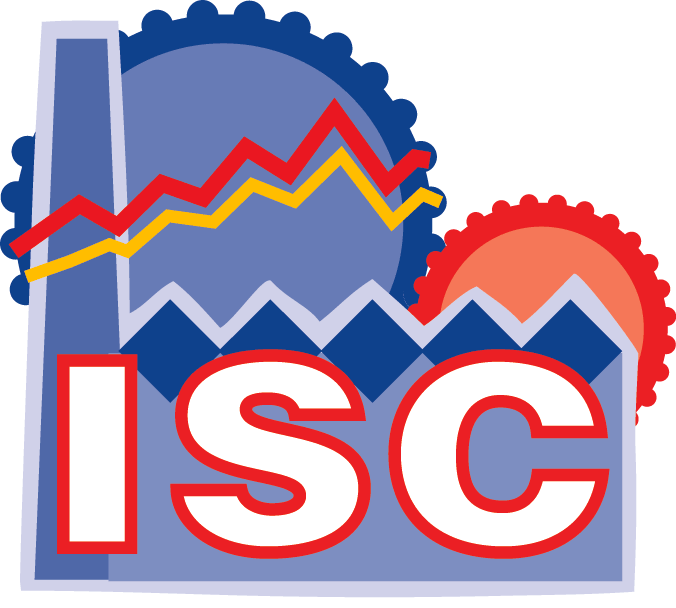
ISC'2006
June 5-7, 2006 - University of Palermo, Palermo, Italy
Conference Venue
|
|
|
Palermo is the capital of Sicily and the fifth largest city in Italy (660,460 inhabitants, and over a million if we include the suburbs). In the middle of the Mediterranean sea, Palermo - the cradle of ancient civilizations - has always been a crossroads of cultures between East and West: a strategic transit place, a privileged port of call for commerce and trade, a landing-place for people of various race, language, and religion. Palermo has always enchanted visitors and foreigners alike with the charm of its location, the mildness of its climate, and the splendour of its buildings. And for these same reasons it has, over the centuries, been dominated by a succession of different rulers. Palermo is one of the few cities in the world that have preserved considerable traces of the culture of their successive conquerors: from the Romans to the Byzantines, from the Arabs to the Normans, from the Swabians to the French, from the Spaniards to the Austrians, they have all left unmistakable marks of their passing; and these are invaluable testimonies, since this convergence of different styles and shapes, from the North of Europe to Africa, from the Middle Ages to the Baroque period, has given birth to a variety of absolutely original artistic, architectural, and decorative creations. Palermo is also characterized by the fact that, despite its mixture of different cultures, the city has maintained its identity as a capital city which at all times has succeeded in combining the best of what other nations could offer with its own people’s vocation for freedom. (content taken from the official site of Palermo tourist board)
Palermo’s origins date back to the period between the 8th
and the 6th
century B.C., when the Phoenicians colonized the area that was
previously inhabited by Sicans, Cretans and the Elimi. The old city centre of Palermo, with its area of over 240 hectares - about one square mile - is one of the largest in Europe and also one of the richest and most varied. It contains over 500 palaces, churches, convents, and monasteries, plus seven theatres. The city has steadily expanded since the period of Phoenician colonisation, with successive waves of Greeks, Romans, Byzantines, Arabs, Swabians, Normans, and Spaniards, until the more recent town-planning initiatives in the nineteenth and early twentieth centuries. As a result, Palermo is extremely variegated and complex in its layout, although it has also succeeded in maintaining a clearly recognisable overall uniformity of structure and character. Little is known of ancient Palermo. The name itself is Greek in origin (it is derived from Panormos, meaning "all harbour"), clearly referring to the city's geographical location. The original port - of which the present-day port, the Cala, is but a small reminder - enjoyed an excellent and almost impregnable position looking out to the Tyrrhenian Sea. The area where the original nucleus of the city began to develop corresponds to what is now that of Piazza Vittoria, the Norman Palace, and the Archbishop's Palace. This area was called Paleapolis (“old town”) to distinguish it from Neapolis (“new town”), the newer part of the city that spread over an area sloping down to the sea, bounded by two rivers, the Kemonia and the Papireto. The old city centre now covers the area of Piazza Verdi (Teatro Massimo), the central railway station, Porta Nuova, and Porta Felice (the last two being respectively the city's south and north gates). The marks of the devastating air raids of the Second World War are still plainly visible, although the city has lately started on a series of massive restoration work |
Historic Sights
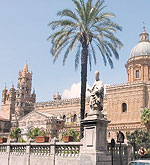 |
The historical sights can be
divided into four groups: religious buildings, museums, historical
buildings and places of interest:
|
![]() More information about Sicily can be found on:
More information about Sicily can be found on:
- http://www.comune.palermo.it/site.htm
- http://www.comune.palermo.it/English/crossroads.htm
- http://wikitravel.org/en/Palermo
- http://www.travelplan.it/palermo_guide.htm
 http://www.wunderground.com/global/stations/16405.html
http://www.wunderground.com/global/stations/16405.html- http://palermoit.ags.myareaguide.com/
 http://historic-cities.huji.ac.il/italy/palermo/palermo.html
http://historic-cities.huji.ac.il/italy/palermo/palermo.html

http://www.bestofsicily.com/transport.htm
![]() A detailed map I copied of the Palermo city centre in relation to the University of
Palermo can now be downloaded
here You will have to
enlarge it a bit for better details.
A detailed map I copied of the Palermo city centre in relation to the University of
Palermo can now be downloaded
here You will have to
enlarge it a bit for better details.
|
|
The ISC'2006 conference is held at the University of Palermo in the central university building on the 2nd and 3rd floor. More information will be posted here shortly.
Universitŕ
degli Studi di Palermo
|
 |
HOW TO GET TO PALERMO AND THE UNIVERSITY OF PALERMO |
 |
|
|
Palermo Airports

There are three main civilian airports in Sicily (see map above), connecting
the island with some major airport hubs in Italy and Europe.
Falcone e Borsellino
Airport (Palermo)
This is the closest
airport to Palermo, located at Punta Raisi, about 32km (20 miles) far from
the university campus. The airport is well connected with Palermo by a light
rail service (Trinacria
Express), with trains running all day long between the airport and
Palermo Central Railway Station. One of the stops along the route,
called Orleans, is located just in front of the main entrance of the
University campus.
The airport is also connected to Palermo by motorway, and a regular service
of coaches connects the terminal with the town centre (one way ride about 50
mins).
The following table
provides a list of some no-frills airline carriers connecting main European
cities with Falcone e Borsellino airport by direct flights.
|
Company |
Direct connections with Falcone e Borsellino Airport |
|
Milan Linate (LIN), Rome Fiumicino (FCO), Turin, Venice |
|
|
Naples, Venice |
|
|
Barcelona (with stop over in Naples or Florence), London Gatwick (with stop over in Florence), Madrid (with stop over in Florence), Paris Charles De Gaulle (CDG). |
|
|
Bergamo Orio al Serio (BGY), Colonia/Bonn (CGN), Hannover (HAJ), Milan Linate (LIN), Paris Orly (ORY), Rome Fiumicino (FCO), Stuttgart (STR) |
|
|
London Stansted |
Half hourly shuttle buses provide inexpensive transport into the city
centre (5 euros). There are 1-2 trains
per hour, 50 minutes, €8 (destination Punta Raisi). The usual taxi and
car rental services
are also available at the airport.
Vincenzo Florio Airport (Trapani/Birgi)
This is the
closest airport to Trapani (at the tip of the western sicilian coast, in
front of the beautiful Egadi's Archipelago). Located in Birgi, about
112km (70 miles) far from DIMA. The airport is well connected with
Palermo by train (from Trapani's train station) and car or coach
(motorway A29 all the way long).
Here is a
list of some no-frills airline carriers connecting main European cities
with Trapani/Birgi airport by direct flight.
|
Company |
Direct connections with Vincenzo Florio Airport |
|
Bari, Milan Linate (LIN), Rome Fiumicino (FCO), Turin, Venice (with stop over in Bari). |
Fontanarossa
Airport (Catania)
This is the
closest airport to Catania, the main town on the eastern Sicilian coast,
on the Etna valley. Located about 210km (130 miles) from the University.
The airport is well connected with Palermo by motorway (A19), with a
regular service of coaches running through the day (SAIS
coach service).
Here is a
list of some no-frills airline carriers connecting main European cities
with Fontanarossa airport by direct flight.
|
Company |
Direct connections with Fontanarossa Airport |
|
Milan Linate (LIN), Rome Fiumicino (FCO), Turin. |
|
|
Naples, Venice |
|
|
Barcelona (with stop over in Naples or Florence), Bologna, London Gatwick (with stop over in Florence), Milan Linate (LIN), Paris Charles De Gaulle (CDG), Venice, Verona. |
|
|
Barcelona (BCN), Bruxelles (BRU), Bergamo Orio al Serio (BGY), Milan Linate (LIN), Paris Orly (ORY), Rome Fiumicino (FCO), Venice. |
|
|
Berlin, Frankfurt, Munich, many other destinations in Germany... |
|
|
Luxemburg |
|
|
Amsterdam |
Major national flag carriers such like Alitalia, British Airways, Lufthansa, fly also to Palermo and Catania's Airports.
|
|
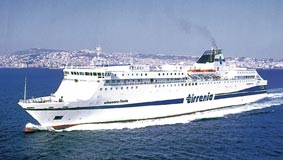 Regular ferry
services for passengers and vehicles connect Palermo with some main
ports in the Mediterranean area and in the rest of Italy, such like Cagliari
(Sardinia),
Civitavecchia/Rome (12 hrs),
Genoa (20 hrs),
Livorno (19 hrs),
Naples,
Salerno, Tunisia, Valencia (Spain). For more information about services
available, visit the website of the main ferry liners:
Grandi Navi Veloci,
Grimaldi ferries,
Tirrenia, or click
here for more routes.
Regular ferry
services for passengers and vehicles connect Palermo with some main
ports in the Mediterranean area and in the rest of Italy, such like Cagliari
(Sardinia),
Civitavecchia/Rome (12 hrs),
Genoa (20 hrs),
Livorno (19 hrs),
Naples,
Salerno, Tunisia, Valencia (Spain). For more information about services
available, visit the website of the main ferry liners:
Grandi Navi Veloci,
Grimaldi ferries,
Tirrenia, or click
here for more routes.
|
|
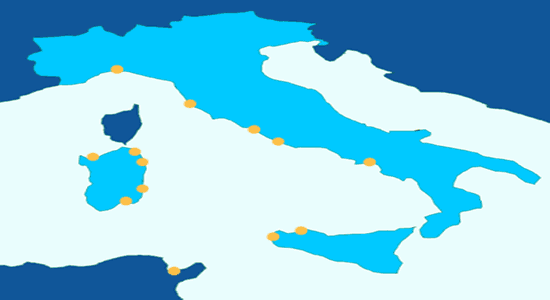 |
|
|
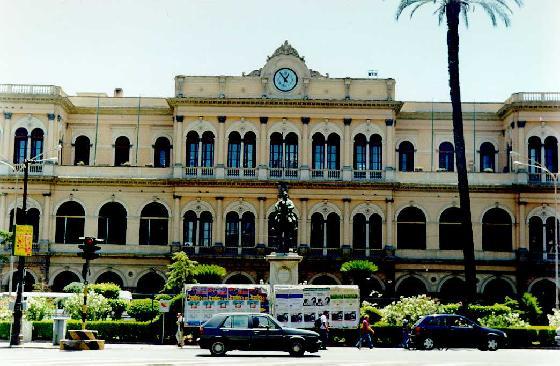
 |
Further information on train connections can be found on this link. |
|
|
|
By Car
Palermo is the ideal junction of three main branches of motorway, of which one connects the town with the western part of the Island (Palermo-Trapani A29), one the North-eastern part (Palermo-Messina A20) and one the South-eastern part (Palermo-Catania-Siracusa A19). The A20 motorway runs along the northern coast, ending up in Messina, where a ferryboat service is provided all day long to cross vehicles onto the continental mainland (the whole crossing the channel operation usually taking about 60 mins in low-peak times).
· From the west, Trapani and Falcone-Borsellino airport:
- by car: drive along the A29 motorway (Trapani-Palermo) towards Palermo; once entering Palermo's area, A29 will become a urban ring road called Viale Regione Siciliana. Keep driving along Viale Regione Siciliana in the est-bound direction (towards Messina-Catania), till you get to the crossing with Via Ernesto Basile. Turn to the left (in the direction towards the sea) to enter Via Ernesto Basile. After a couple of miles driving down Via Ernesto Basile you get the university campus located on your left. Now you can easily drive into the campus by following the street signs.
- by light rail metro: departures are from Palermo Central railway station and from Falcone e Borsellino airport, with stops located along the route within the town. Getting off at Orleans metro stop, you will be in front of one of the main entrances of the university campus.
- Coach services (Prestia & Comandč, Segesta, Sais, etc..) connect Trapani, Falcone e Borsellino airport and some of the main villages west and south-west of Palermo to the parking areas adjacent to Palermo Central railway station.
· From the east, Messina, Catania:
- by car: drive along the A19/20 motorway from Catania/Messina towards Palermo; once entering Palermo's area, A29 will become a urban ring road called Viale Regione Siciliana. Keep driving along Viale Regione Siciliana in the west-bound direction (towards Trapani), till you get to the crossing with Via Ernesto Basile. Turn to the right (in the direction towards the sea) to enter Via Ernesto Basile. After a couple of miles driving down Via Ernesto Basile you get the university campus located on your left. Now you can easily drive into the campus by following the street signs.
- by light rail metro: departures from Palermo's main railway station with stops located along the route within the town. Getting off at Orleans metro stop, you will be in front of one of the main entrances to the campus.
- Coach services (Prestia & Comandč, Segesta, Sais, etc..) connect the main villages on the est and south-est of Palermo to Palermo Central railway station, and other main sites in the town centre.
· From Palermo Central Railway Station:
- A network of urban buses (AMAT) runs through the town. To go from Palermo Central Railway station to the university campus, take bus number 234, leaving from Piazza Giulio Cesare, just outside the railway station.
· From the Sea Port:
- Get to the central Piazza Politeama and from there take bus line 108 to get to the University campus.
The university campus can be reached by bus through a number of different bus lines and routes. For an updated appraisal of the services available, please visit the AMAT website, or ask at the information points located in some of the busiest bus stops (such like Piazza Giulio Cesare, opposite Palermo Central train station)
By Bus
Get a 24
hour ticket for €4. Many busses run on Via Roma. To go to Pl Indipenza take
bus 109 from the station.
Regular, fast buses to
Catania,
Taormina,
Trapani,
Enna,
Agrigento, and
Syracuse. Loads of other places are served too
MAPS
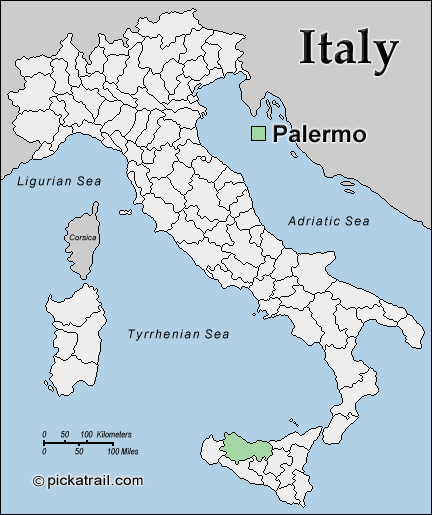
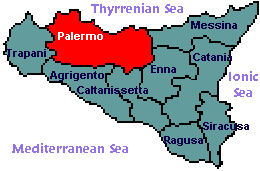
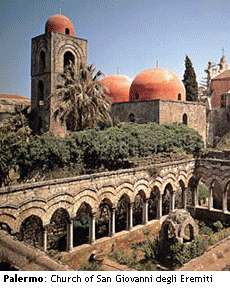 |
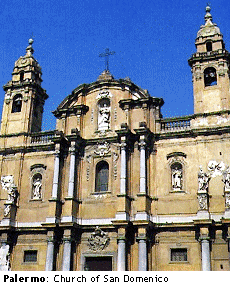 |
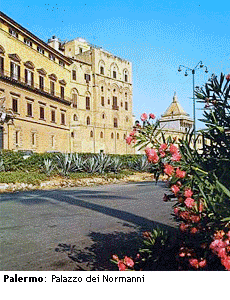 |




















 Conference Venue
Conference Venue 